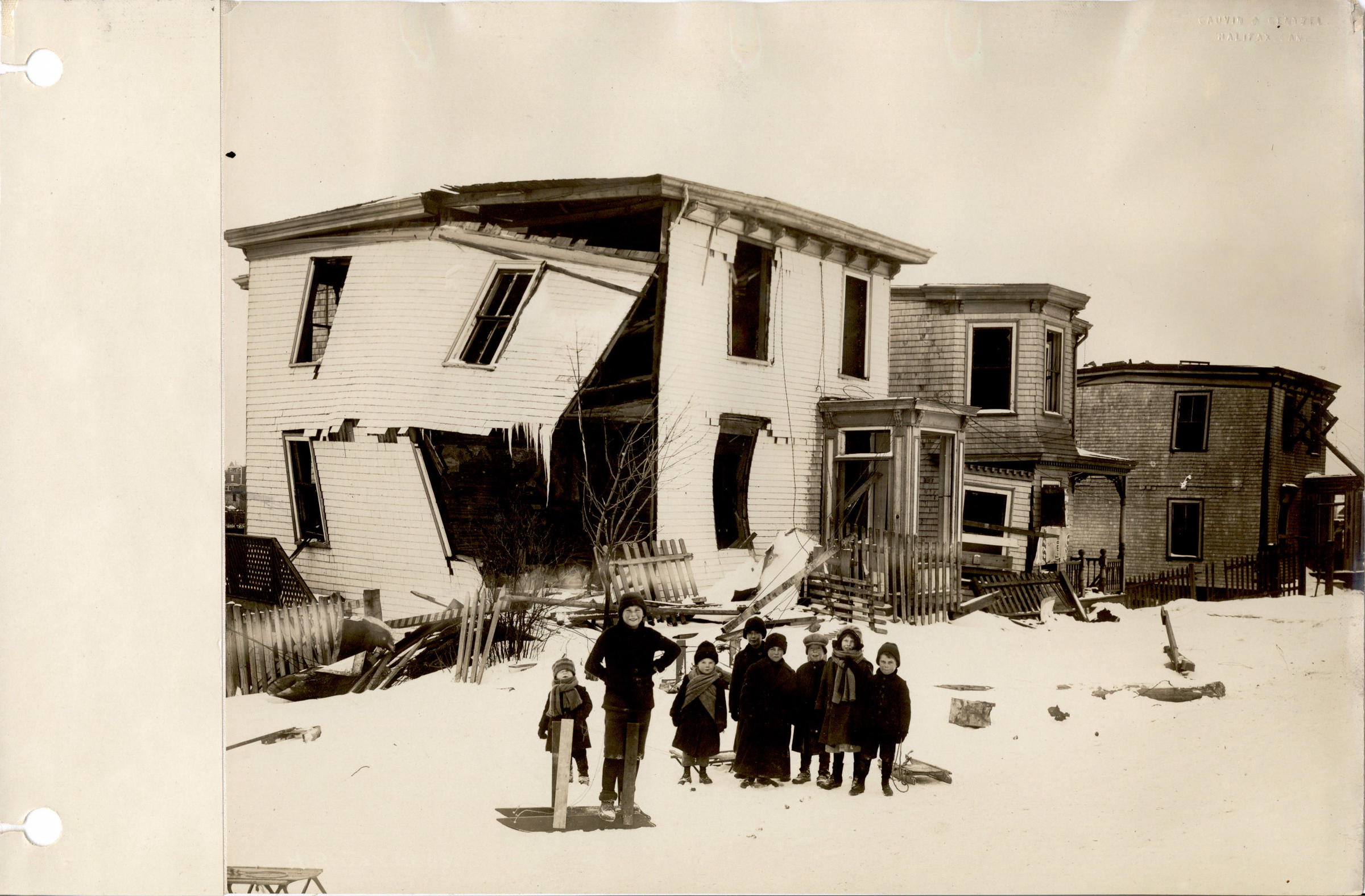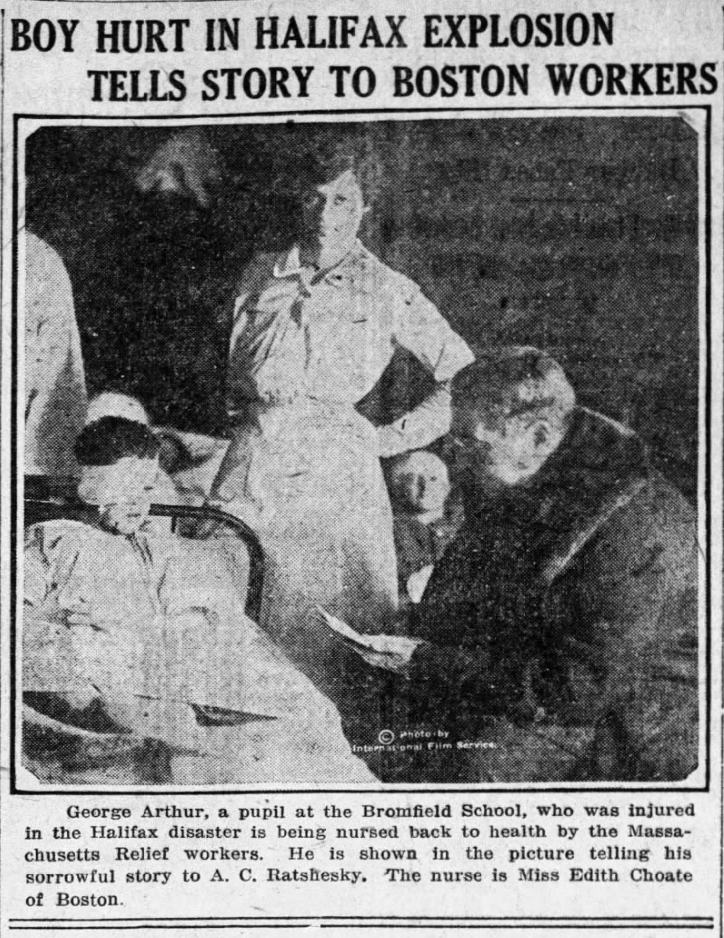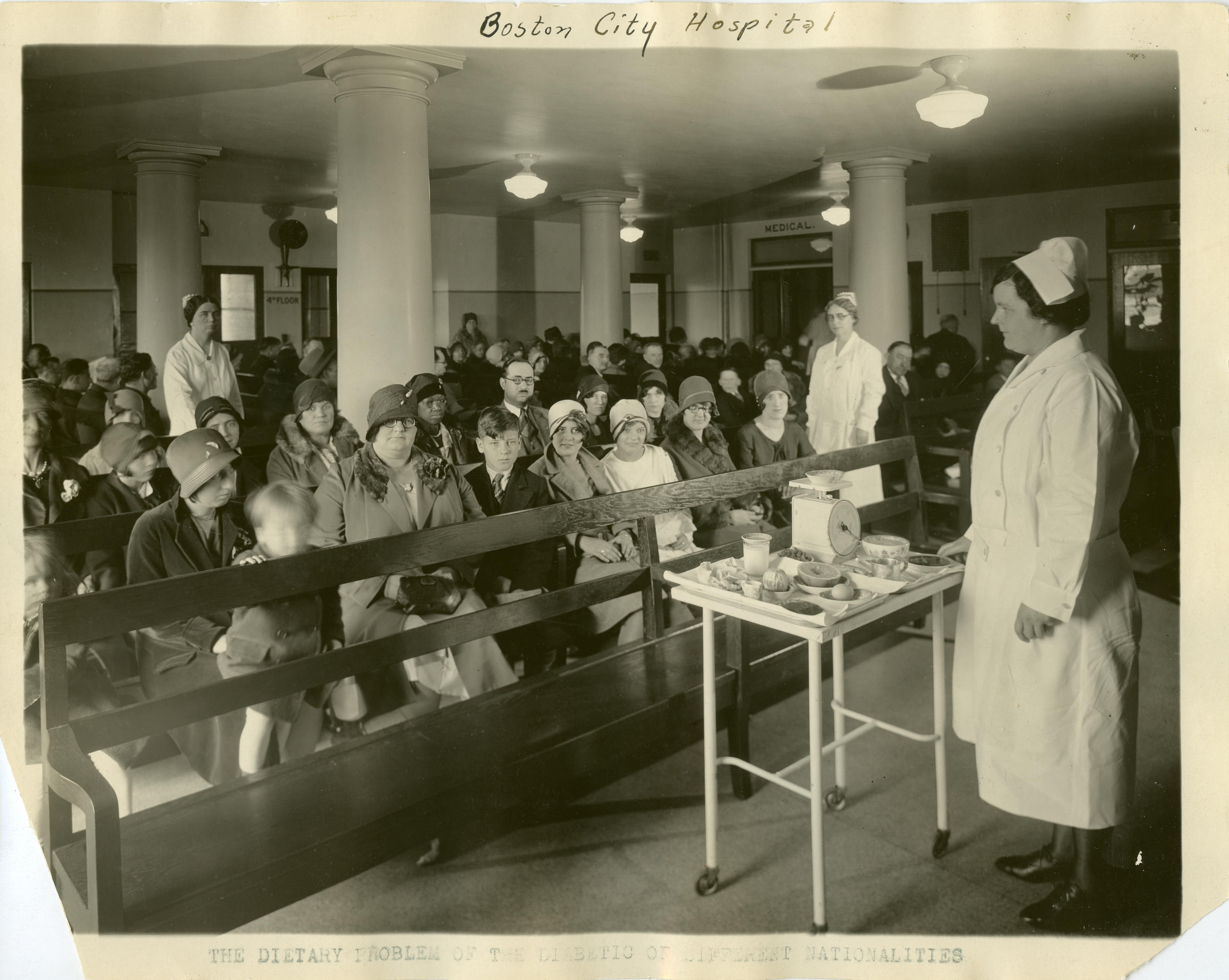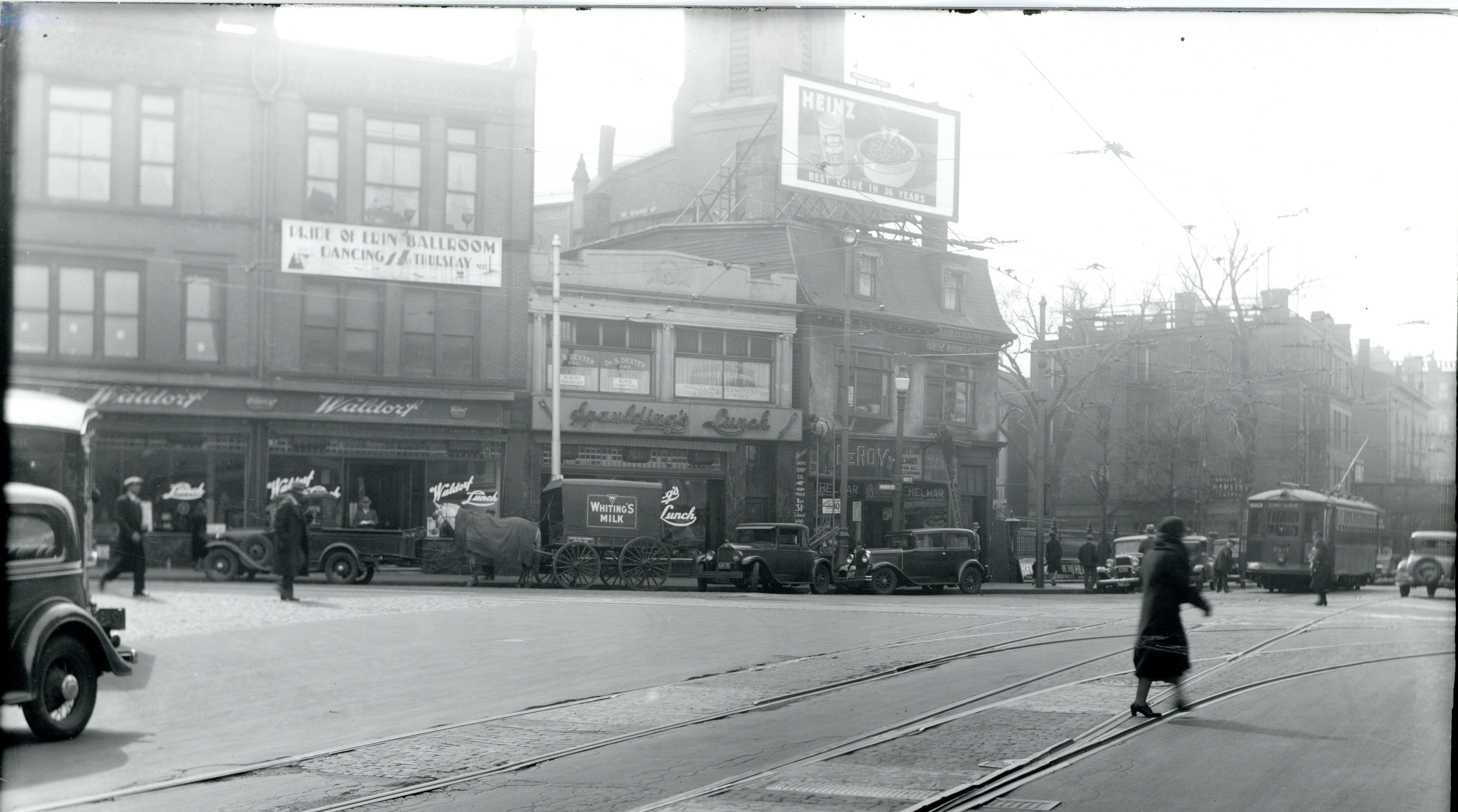Maritime Women of Boston: Canadian Nurses in the 1920 Women’s Voter Registers
by Anna Boyles
The 1880 United States Census reports that roughly fifty-percent of immigrants from Nova Scotia and Prince Edward Island settled in Massachusetts, while nearly thirty-percent of New Brunswick immigrants settled in the Bay State. Thus far, the Mary Eliza Project has discovered over 600 women from the Canadian Maritime provinces of Nova Scotia, New Brunswick, and Prince Edward Island who settled in Boston, became naturalized United States citizens, and registered to vote in 1920 following the passage of the 19th Amendment. Many of these women would have lived in Boston when the city received news of an explosion in Nova Scotia’s capital of Halifax in December of 1917. A French ship packed with munitions collided with another ship in Halifax’s harbor, causing the massive explosion. More than one thousand individuals were killed in the blast, and entire neighborhoods were destroyed by the impact. Tens of thousands more people were injured or left homeless due to the explosion.
Massachusetts Governor Samuel McCall sent a convoy of doctors, nurses, and supplies almost immediately upon hearing news from Halifax. Even though a blizzard delayed their train, these relief workers were the first to reach the city from outside the immediate area. In Boston, however, so many people were gripped by fear for the safety of family members living in Halifax that the City of Boston established an information agency at City Hall to organize their queries. The outpouring of support for Halifax from Boston was more than just neighborly support. The cash donations and labor that rebuilt Halifax homes and businesses resulted from the numerous family ties that stretched from Nova Scotia and the Maritime Provinces to Boston.
As scholars have established, the Canadian Maritime Provinces, including Nova Scotia, experienced a large out-migration of their residents starting in the mid-1800s. Advancements in iron and railways paired with new trade agreements contributed to the collapse of the traditional Maritimes economy, largely wooden shipbuilding and fishing. By the 1880s, out-migration occurred not just from rural parts of the Maritime Provinces, but also from urban areas that were previously unaffected. Geographically and culturally, the Maritime Provinces are closer to Massachusetts than the Canadian capital of Ontario. It is no surprise, then, that many migrated to Massachusetts rather than to other places in Canada. Many Maritime women were attracted to Boston for its educational and vocational opportunities. South End Settlement House worker Albert J. Kennedy reported in his study on Boston’s Canadian community that Canadian women worked in all occupations open to them, but that the “field of nursing they have almost completely captured.” He believed that upwards of seventy-five percent of Boston nurses hailed from Canada and its Maritime provinces.
The Mary Eliza Project has discovered many nurses or nurses-in-training who migrated to Boston from Nova Scotia, New Brunswick, or Prince Edward Island and registered to vote in 1920. Faustina M. Jordan was born in St. John, New Brunswick, in 1891 before she and her family settled in New Hampshire. She appears to have moved to Boston to attend the nursing school at the Massachusetts Homeopathic Hospital, graduating in 1921. Her voter registration lists her as residing at a nurses’ residence hall in Boston’s Ward 6, the South End. Another Maritimer nurse who registered to vote was Jessie E. Grant. Grant was born in Pictou, Nova Scotia, around 1873 before moving to Boston to attend the nursing school at Massachusetts General Hospital. She served as chief nurse at an overseas base hospital during World War I, and she became a United States citizen in 1918. The Simmons College catalog reveals that upon returning to the United States, Grant taught a course entitled Home Nursing at the institution. At the time of her registration in 1920, she was living on Rutland Street in the South End and reported her occupation to be nursing instructor. She would become the superintendent at the Anna Jaques Hospital in Newburyport, Massachusetts, and at the Springfield Hospital in Springfield, Vermont.
Jessie E. Grant, being from Nova Scotia, may have been drawn to Boston’s South End neighborhood by the presence of “Scotch corner” around Warren Avenue and Brookline Street. Gaelic speakers from Nova Scotia congregated in this neighborhood after church services on Sunday. In addition, Irish and Canadian dance halls attracted immigrants to the neighborhood. Starting in the 1920s, however, new transit lines brought many Maritime Canadian and their families to Roxbury. They built clubs, fraternal orders, and venues around Dudley and Warren Streets, which entertained Maritimers with Celtic music reminiscent of home.
Discover immigrants from Nova Scotia, New Brunswick, Prince Edward Island, and other Canadian provinces in Boston’s voter registrations, including newly transcribed Ward 1 and Ward 2 (East Boston), Ward 10 (South Boston), and Ward 11 (Dorchester).
Anna Boyles is a dual-degree student in History and Archives Management at Simmons University.







